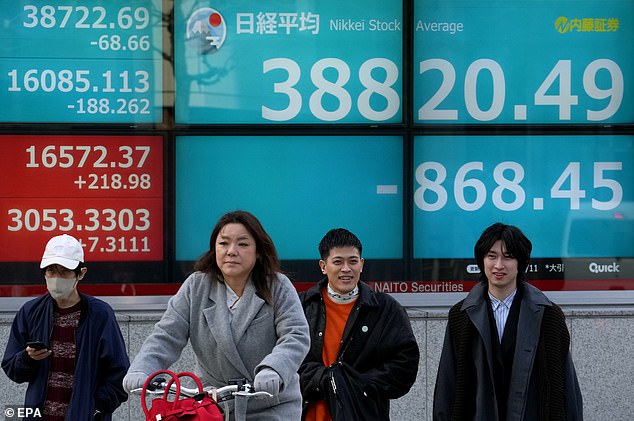<!–
<!–
<!– <!–
<!–
<!–
<!–
Japan could be on the verge of raising interest rates to move out of negative territory after revised figures showed the country narrowly avoided recession.
The economy grew 0.1 percent in the fourth quarter, compared with an initial reading of a 0.1 percent decline.
That could give the Bank of Japan room to raise interest rates for the first time since 2007 when it holds its policy meeting next week.
Rates in Japan have been stuck at -0.1 percent since February 2016.
Some central banks use negative interest rates to encourage commercial banks to lend and consumers to borrow more in order to boost economic growth.

Rate hikes: Japanese economy grew 0.1% in the fourth quarter, down from an initial reading of a 0.1% drop
It is also used to reduce the risk of deflation or price falls, which can sometimes be more damaging to an economy than inflation, when prices rise.
Japan, Switzerland, Sweden and Denmark have negative interest rates or have used them in the past.
But with Japanese economic growth stronger than initially reported and inflation hitting a 41-year high of 3.1 percent last year, many believe the central bank will begin raising rates again to curb price increases. to its 2 percent target.
The pressure also comes from strong wage growth and labor shortages, both of which will drive up prices even further as workers pocket more money to spend.
The upward revision to GDP was attributed to an increase in business investment, which helped offset lower consumer spending on goods such as food and energy as a result of rising inflation.
It was enough for Japan to avoid a technical recession, defined as two consecutive quarters of declining economic growth.
Marcel Thieliant, Asia Pacific director at Capital Economics, said the revision was smaller than most had anticipated.

